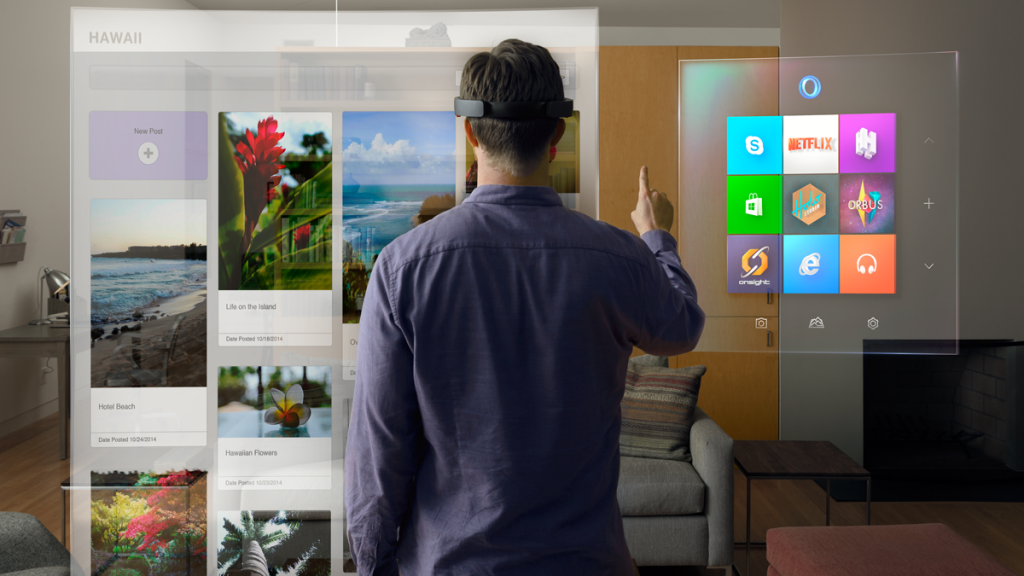<p style="text-align: justify;">Augmented reality transforms advertising as we know it. Although the principles of a perfect advertising remain the same, digital advertising rises onto a new level of interactivity showing a new, very different direction of evolution. How?</p>
<p style="text-align: justify;">Interactivity. This is what brands need to engage the audience and this is what AR ads do. No wonder, big companies with the focus on advertising like Facebook and Google have already announced their work on AR platforms which they plan to make open for development teams and content producers.</p>
<p style="text-align: justify;">AR-based ads not just show a product, they allow to try it, literally. Potential customers can hold the product in their hands, view it from all angles, rotate it, zoom it or make an image while augmented reality helps them identify the benefits of the product.</p>
<p style="text-align: justify;">AR promo apps can be an effective tool in company’s marketing campaign increasing brand awareness, customer engagement and eventually, sales. Also, most of the smartphone users are already acquainted with AR apps or at least have heard about them. Most definitely, they will know how to deal with a branded AR app. On the other hand, AR advertising will still wake interest due to technological novelty (unlike TV ads).</p>
<p style="text-align: justify;"><strong>Where can be AR ads demonstrated? On every “smart” device (i.e., it must have a screen, a camera and operating system). Here is just a short list:</strong></p>
<ol style="text-align: justify;">
<li><strong> Mobile apps</strong> – there are many popular AR apps, from InkHunter apps through IKEA to Amikasa. The common things: the apps visualize the products users would be happy to buy letting them see their real colors and dimensions.</li>
<li><strong> Billboards / Bus Shelters</strong> – show ads upon an event, e.g., display ads on a bus that was previously invisible when the bus approaches.</li>
<li><strong> Storefronts</strong> – enable customers get more information with no need to enter the store. Users see a product, put their smartphone onto it, and get additional information like price, sizes and colors available, extras etc.</li>
<li><strong> Digital kiosks</strong> – customers put products in front on the camera and see how it will look like on a wide screen with all details (for those who do not want to install another app on their phones).</li>
</ol>
<p style="text-align: justify;">What can be the limitation of an AR advertising campaign? Imagination is the only limit. However, one should be aware when planning that ads brings added value to the campaign:</p>
<ul style="text-align: justify;">
<li><strong>Right audience, right experience. </strong>Offer your audience a correct level of technical complexity. When you plan an app, it must contain only the core features and clear instructions – as few as possible.</li>
<li>Users must profit from using the app. It must help them do something in fewer steps (e.g., suggest the color for a piece of furniture or new wall paint for bedroom based on the light level).</li>
<li><strong>Taking AR seriously.</strong> It is worth testing ad campaign before going live as there might be sensitive people (just imagine a crowd of zombies attacking you while you’re sitting on a bench and waiting for a tram).</li>
</ul>
<p style="text-align: justify;"><iframe src="https://www.youtube.com/embed/B7FzWUhgqck" width="560" height="315" frameborder="0" allowfullscreen="allowfullscreen"></iframe></p>
<p style="text-align: justify;">Augmented reality provides a powerful combination of visualization and interactivity enabling AR advertising to dramatically raise customer engagement and play the key role in the overall success of a marketing campaign making it serious instrument for sales and promotion.</p>

Augmented Reality Ads: The Future Is Closer Than You Might Think
